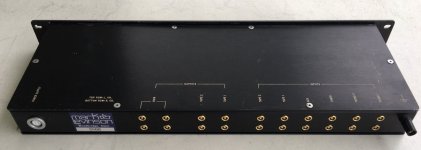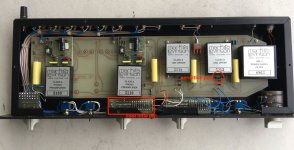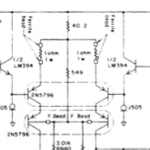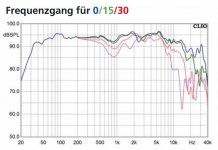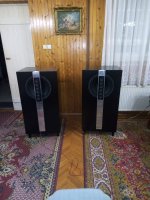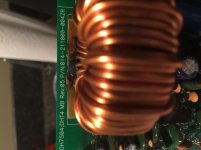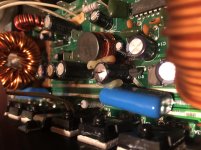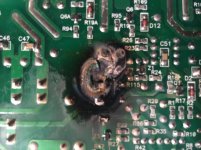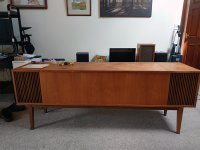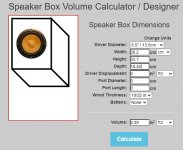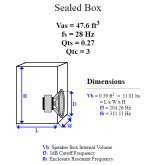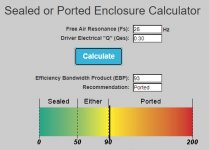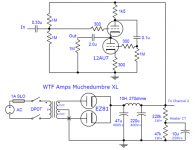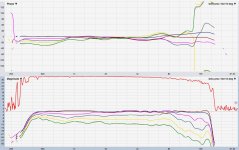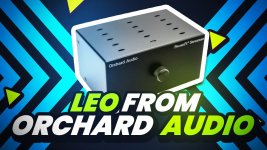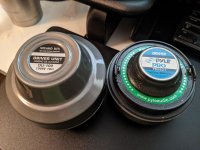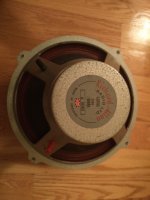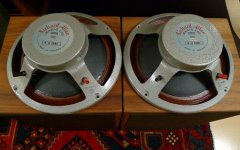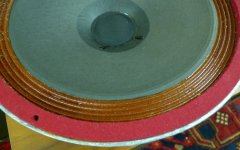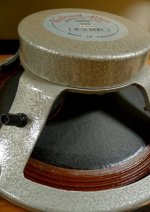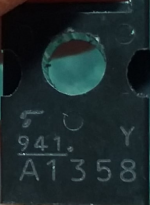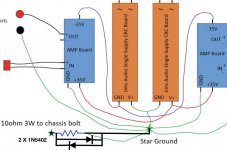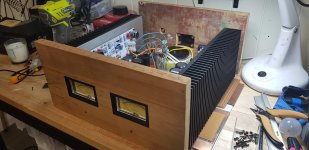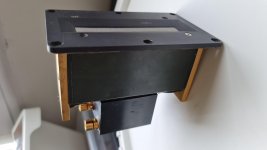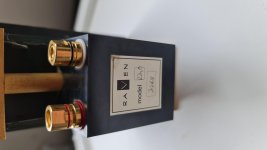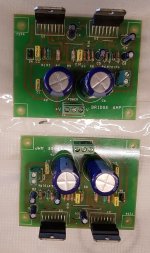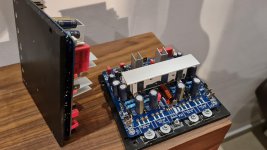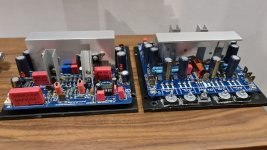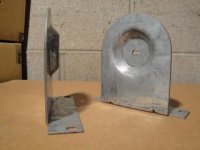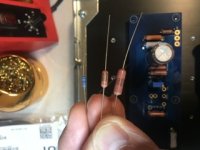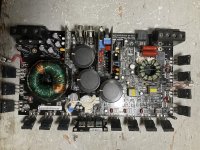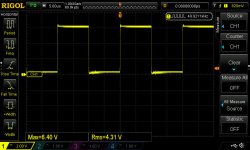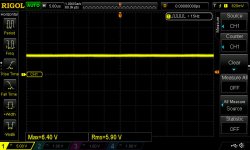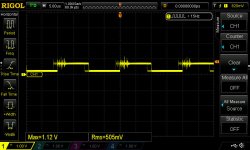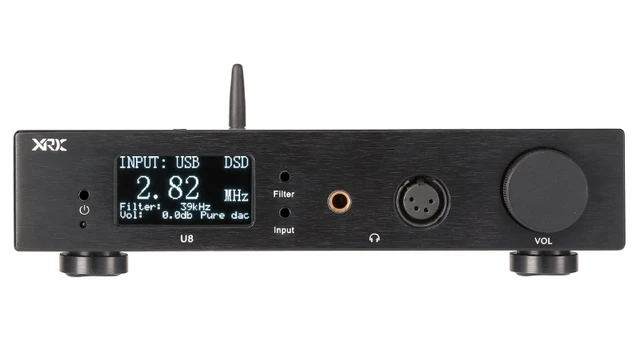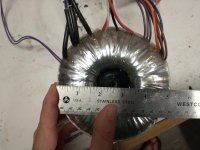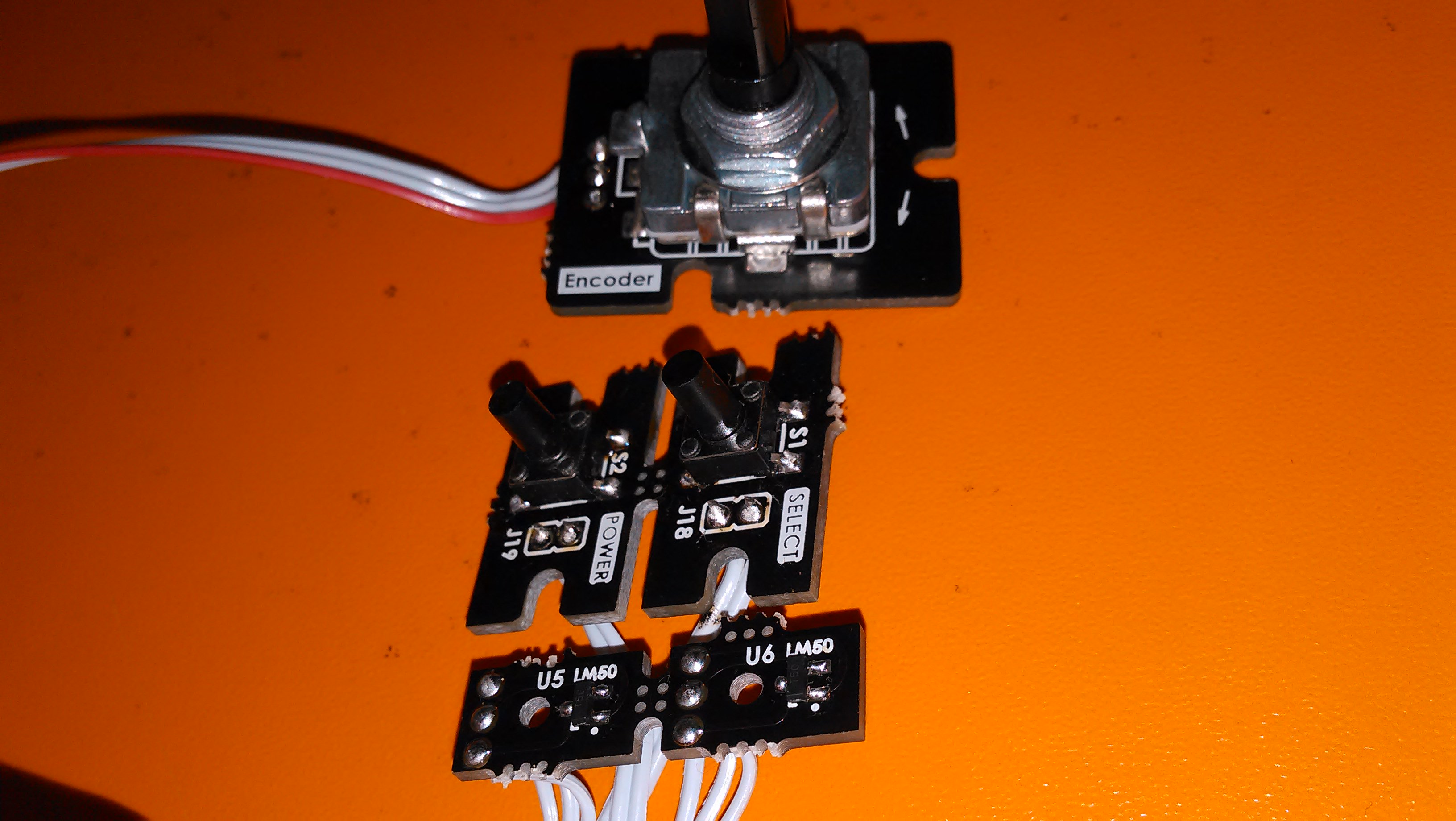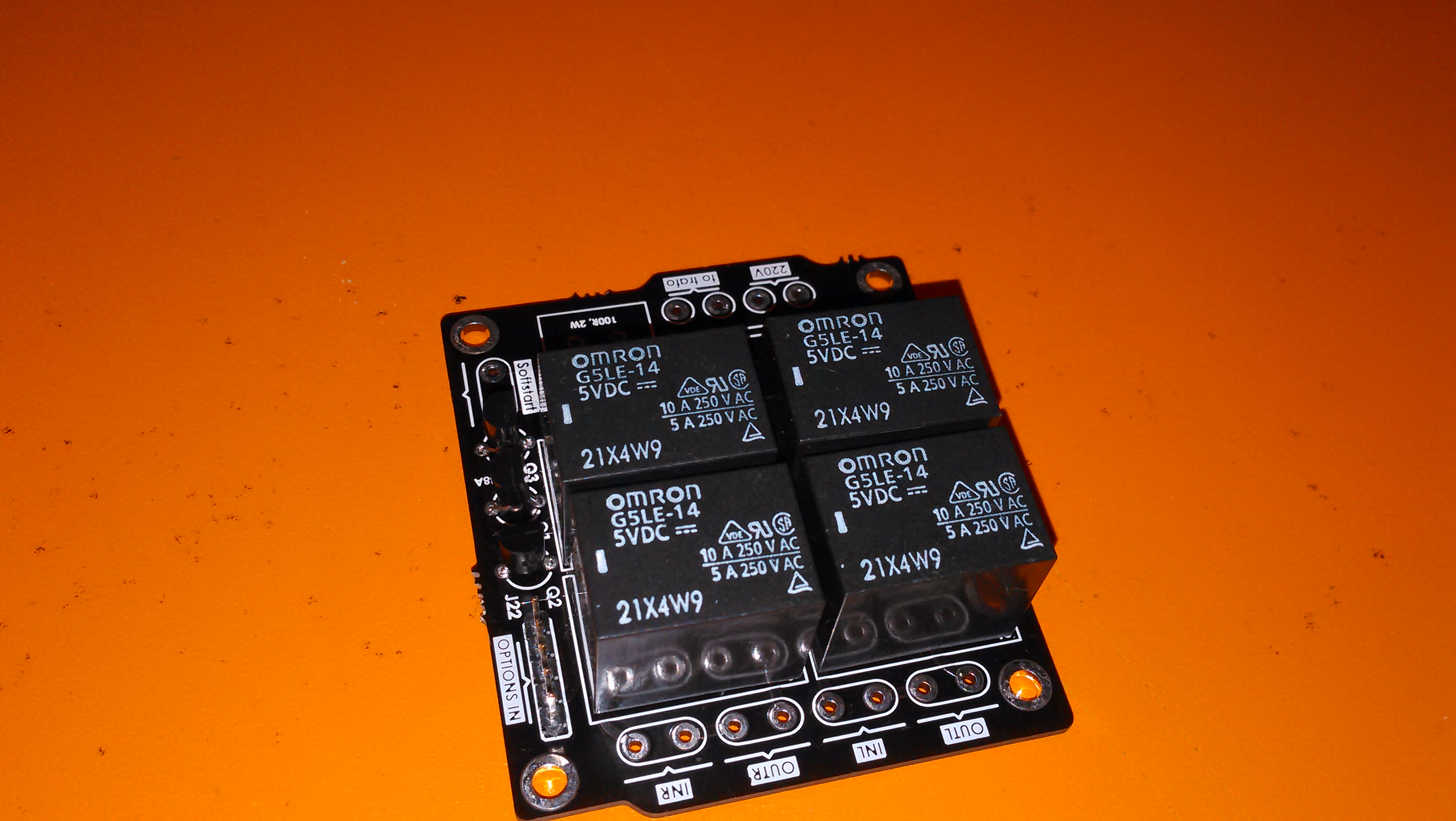Hello guys.
This story is for yet another highly overpriced old cd player, part of component system with beautiful look. Mirrors on front panels, fluorescent tubes, ....
I brought receiver and 2 cd players from this system few months ago. In attempt to impress, seller warned me: This system have the 'modern' sound! Didn't pay attention to his words because i do not believe in all those metaphors. First try at my speakers and surprise, no dynamic, no resolution, no high bands. Classic, symphonic orchestra, Manowar, Mettallica, whatever material i trow to it, no more than 2 minutes and i am forced to stop it. After ~20 minutes -> hard fatigue.
NO WAY, it was kidding with me! I like their outlook and don't want to throw them in recycle bin.
First i opened the receiver. Schematic is available online for few versions of it. Almost immediately it was fixed, at least to point which allows me to continue. In general, i liked what i found inside, didn't dig in details yet. Good transistor amplifier, good thermal design, more later.
Next, CD players. Little to zero technical info for them on internet. Few reviews, rarely alluding in half sentence potential sound problem. I was intrigued here.
Seems there are at least 2 versions too. Some specs sites say it should contain 2xPCM1702-L (20 bit), but mine has 1xPCM1735E. Only empty holes on PCB for those PCM1702. Again, almost no info for PCM1735, except few other systems using it, and for them spec sites say 24bit dac. Didn't spy I2S to see what it is feed with, some not trustful sites mention mysterious ALPHA Denon proprietary sound processor in front of it for oversampling to 20 bits (for 2xPCM1702-L). After this dac i found SMD OP275 configured as Sallen-Key low pass with equal values and some small gain. 44kHz, 1.68 voltage gain, 0,757 Q. Again, empty slots for some other 2 SMD opamps. Nothing fancy, but very promising star.
Quick measurements reveal one leaking (not shorted, just leaking) mute transistor, which resulted in reverse biased decoupling cap with ESR and voltage lost higher in decades. Around this cap i measured 9mV at opamp side and 2.5V at floating unit output (nothing connected to RCA)! Final decoupling caps was replaced with 2 reverse paralleled ones, transistors desoldered, very little improvement, if any at all. Wait what the *** is going here? Every element of the filter was checked and was completely OK. Get output directly after dac (using 150ohms stop resistors) and it shines. Ok then, at least dac is ok, let continue.
OP275 is powered by +8/-9V, with ~1-1.5V ripples at positive rail and flat negative! Ok, almost everything else is powered from 5V derived from it and that is the reason. But hey, this little chip is +/-22V one. It is undervolted very seriously, limiting its bandwidth and so on. Quick try with external PSU at +/- 15V proved that. Big difference. But, no suitable place to put third trafo inside the box! Difficult situation. Resolution: 2 half wave voltage doubler rectifiers, with 100uF pass,1000uF buffer caps and 4x1n4005 diodes, and single 470uF between rails. Ripples under 0.5V per rail, but absolutely symmetrical. 2 absolutely equal 17.5 volts. Big improvement in place, still dull sound for me.
What else can be wrong? Mute transistors are out, power for amp is ok, all elements are ok and within 5% range, or even 1%? What else? Wait, they put 680 ohm stoppers!?!? Usually not a problem, but not what i expect for source impedance. Quick swap with 100 ohms and Tha-Daaa. This little boy start to produce what it should at first place!
Great, now new muting transistors. But, there is something wrong (to my eyes). Regular NPNs, but with emitters to signal. Why? It is imperatively Denon decision to use such configuration in almost every system they ever made, seen very rare on other brands too. There are tons of reasons why not to use this configuration, from pure safety to killing actual signal quality! 2 garbaged 2N2222A, but with emitters pointing to GND -> no more pops and output quality is preserved.
Now this player plays very close to my main Yamaha RX-A1050 (to its 32bit sabre dacs) connected to external CD transport. For tests Denon is connected to analog input and transport is connected to coax spdif of this big boy, so same post processing, same power amp, same speakers. No ambitions to make them equal, actual achievement is more than i expected. Material investments was minimal, entirely from my junk box.
The lesson: Pay attention to small and unexpected things. They may made really big difference.
Now i will get back to the receiver to see what can be done with it.
Hope my story may help to someone else, as some or all of those errors are found in so many players, even in so called high end ones. Usual internet advises are in completely different ways, difficult to implement and with suspected outcomes.
EDIT: New power supply was added only for opamp. Everything else remains powered as before.
